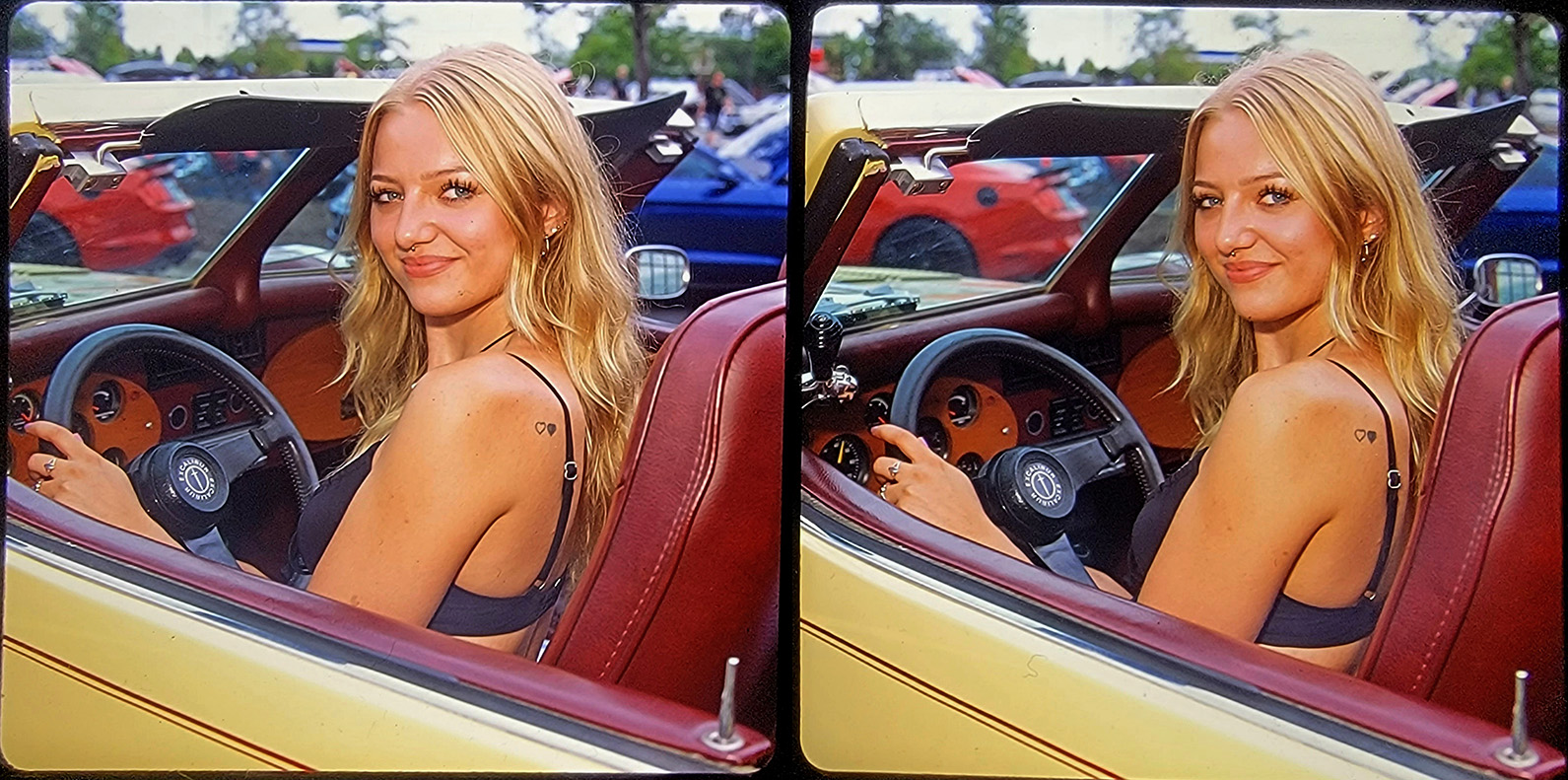
Jim Harp – Hailey and the Excalibur
Photographed at a “Tilted Kilt” car show in Bolingbrook Illinois, August 2023. TL-120 with Vivitar 285H fill-flash. Provia 100F pushed one stop.

Jim Harp – Hailey and the Excalibur
Photographed at a “Tilted Kilt” car show in Bolingbrook Illinois, August 2023. TL-120 with Vivitar 285H fill-flash. Provia 100F pushed one stop.
Covid Road Trip #1 was submitted to loop d24 of the Dragon Folio.

As soon as the borders to the US opened, I booked tickets for “The Presidents’ Heads”. My visit there took place in November of 2021. I met a lot of nice photographers at the Heads. A pair of them told me about this site that would eventually become COVID Road Trip #2 in April of 2022; “Old Car City” in White, Georgia. 4700 vehicles from 1918 to 1972 slowly being reclaimed by nature. It’s well-documented on YouTube.
“Twitter Barn” – Ever wonder where Elon Mollusk got the inspiration for his inventive re-naming of the Twitter platform? It was from this very barn, somewhere near the border of two States, on the way down to Georgia. TL-120-55, and some expired colour film. Could have been Provia 100F.
“Old Car City – Ford Detail” – I think this is an emblematic example of my work. Sputnik, Superpan 200.
“’50 Buick OCC” – I love the 1950 Buick. GM only made that grill style for one year. Sputnik, Superpan 200.
“’50 Buick Old Car City, GA” – A different 1950 Buick. Shallow depth of field, scratch on the film. Sputnik, Superpan 200.
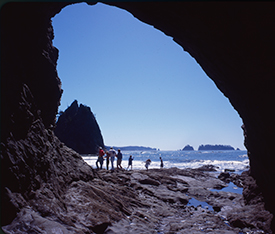
Sea stacks seen through a sea cave
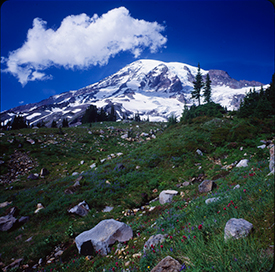
Another picture postcard perfect view of Mount Rainier by the master
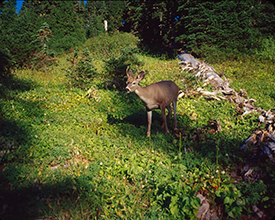
Deer along a trail at Mt. Rainier
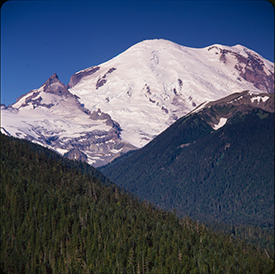
Hyperstereo View of Mount Rainier
Another car from the group of cars promoting a condo building, now under construction.
I had a roll of Velvia 100 and finally got a subject I thought would benefit.
Shot with my TL120.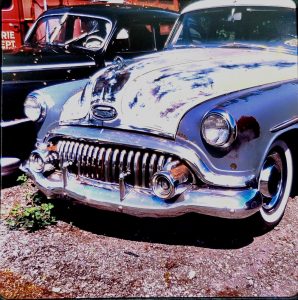
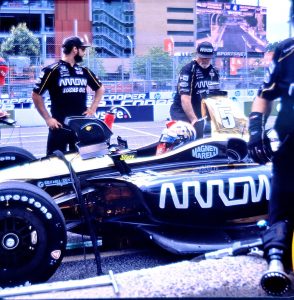 To get closer to the cars in the pits, I bought a pit pass, a couple of races ago. I think this was Marco Andretti, but there is nothing to confirm it in the image. Only my memory.
To get closer to the cars in the pits, I bought a pit pass, a couple of races ago. I think this was Marco Andretti, but there is nothing to confirm it in the image. Only my memory.
Shot with Provia 100f in my TL120.
As we walked through the main palazzo in Syracuse, I noticed a barber shop and knew that I had to take a 3D shot of it. The barber was in the middle of shaving someone, so the composition with the mirrors and lighting was amazing. We were headed to another location and I took note of the shop as we passed by to come back to it later. Upon my return, it was of course closed, the barber was gone, and the lights were shut off. Regardless, I put my Sputnik up to the window and as you can see me in the shot, I took the photo. Still a fun shot to take but having the barber there working would have been much better. Shot with my Sputnik on Fuji Provia 100f.
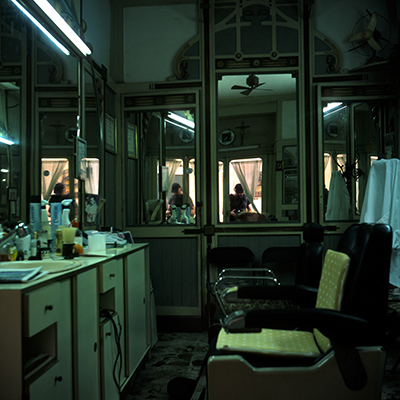
Just outside of Syracuse is a collection of Roman ruins within the Neapolis Archeological Park. Within the park there are many sites to check out, including this Amphitheater built around 212 BC. It is the 3rd largest Amphitheater in Italy. It was in much disrepair and had been used as a quarry at some point by the Spaniards. It was just a shell of what it used to be. I tried to get the best viewpoint to show it’s size from the upper level. Having shot it in 3D, this does give it some of that ‘depth’ that it requires to show it’s true size. Shot with my Sputnik on Fuji Provia 100f.
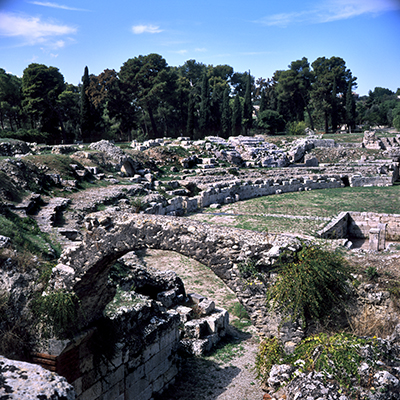
Pompeii is an incredible place to visit. Not only do you feel like you have stepped back in time when you are there, but you are also essentially walking through a gravesite. It’s eeriness combined with the story of that fateful day in 79 AD, makes it all the more profound. One could spend hours walking it’s long narrow streets, peering into the empty shells of homes, and imagining the horror that would have flowed through the town that day. It really sends chills down your spine. This shot was one of my favorites that I took on this trip, however the only personal ‘beef’ that I have with this shot is that it’s a little underexposed. The medallions, I’m sure are ‘new’ and were placed there not long ago. However, I don’t know for sure, since there were no markers to say otherwise. There are many hidden gems in Pompeii, from tiny scribbles on the walls by children, hidden brothels, and splendid mosaics in hallways or doorways. Worth a visit if you are ever in the neighborhood. Shot with my Sputnik, on you guessed it, Fuji Provia 100f.
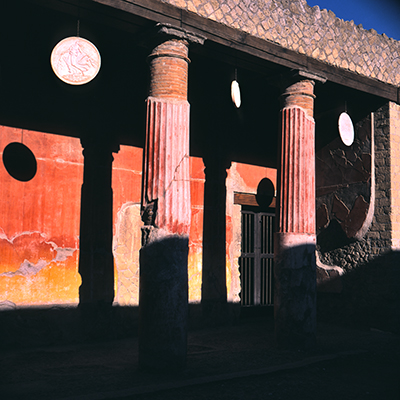
Just outside of the main Roman Forum and Colosseum is Palatine Hill. This is where alot of the senators and statesman lived, amongst some of the most prestigious and wealthy Roman citizens. The views of the surrounding area, and it’s natural beauty made it an ideal spot for such folks. Walking around it’s remnants of the past, I noticed a couple sitting not far from us, trying to shield themselves from the afternoon sun. I knelt down and captured their ‘break’ from the heat. Shot with my Sputnik spy camera, on (the now coveted) Fuji Provia 100f.
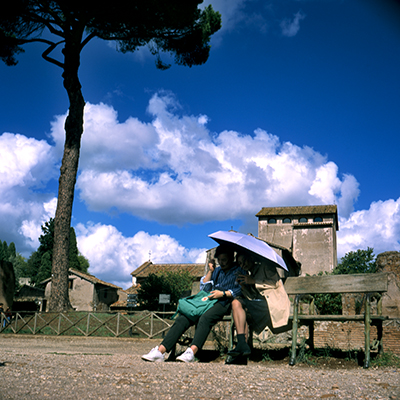
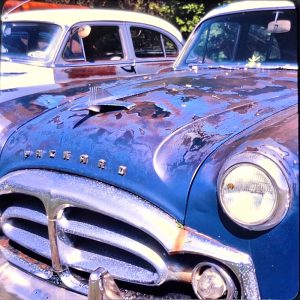 At a sales office, for a new condominium near my house, they had a display of antique cars for over a year. They have been prepared for display using a new technique (to me) where they sand down the layers of paint to deliberately show them. It makes for an interesting photographic experience. I chose a sunny Saturday morning to take a few shots of them.
At a sales office, for a new condominium near my house, they had a display of antique cars for over a year. They have been prepared for display using a new technique (to me) where they sand down the layers of paint to deliberately show them. It makes for an interesting photographic experience. I chose a sunny Saturday morning to take a few shots of them.
After handing the folio to Steven Lederman, at a Tim Hortons in Scarborough, I saw the same cars, now parked to promote a different condo building.
Velvia 100 in my TL120.
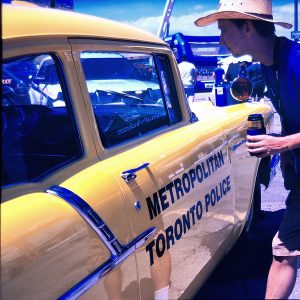 The Toronto Police always have a display at the Toronto Indy, and most years, they have this 1957 Chevy Police car. They had this yellow colour until some time in the 80’s. I seem to remember this particular car dressed with eyebrows and blinking eyes, made from fiberglass, over the windshield, as Blinky the Police car. It was taken to schools and to community events.
The Toronto Police always have a display at the Toronto Indy, and most years, they have this 1957 Chevy Police car. They had this yellow colour until some time in the 80’s. I seem to remember this particular car dressed with eyebrows and blinking eyes, made from fiberglass, over the windshield, as Blinky the Police car. It was taken to schools and to community events.
Anyhow, the title “Big Yellow Taxi” is from the Joni Mitchel song, of the same name, which she wrote when she lived in Toronto (stop me if you have heard this before). The idea of the police car, which looks like a taxi cab, leaves the song making more sense, than if you didn’t know it was supposed to be a police car, taking away her “old man”.
Shot on Provia 100f in my TL120.
I like the look of this bee a lot, but this is one of the very few times I was able to also capture an insect other than a bee. One of the things I love about these echinacea is the colorful spikes in those danger colors—yellow, orange, and red—like a collection of nuclear warheads arranged by Fibonacci.
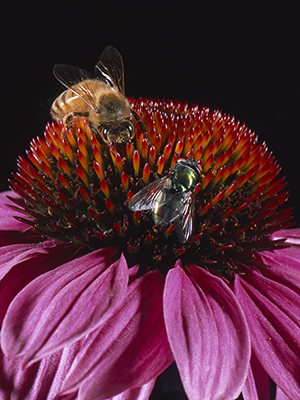
Honeybee and green fly join forces in the inspection of nuclear warheads